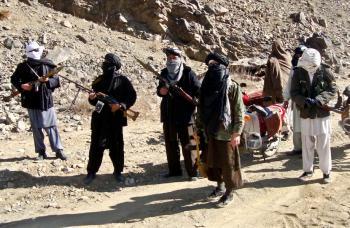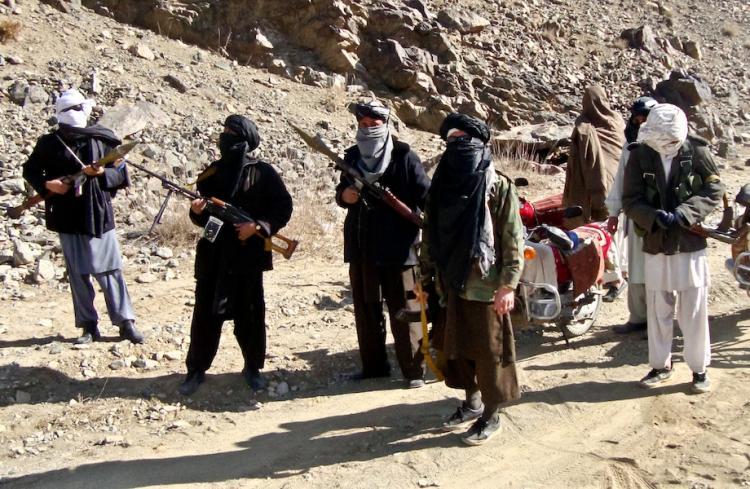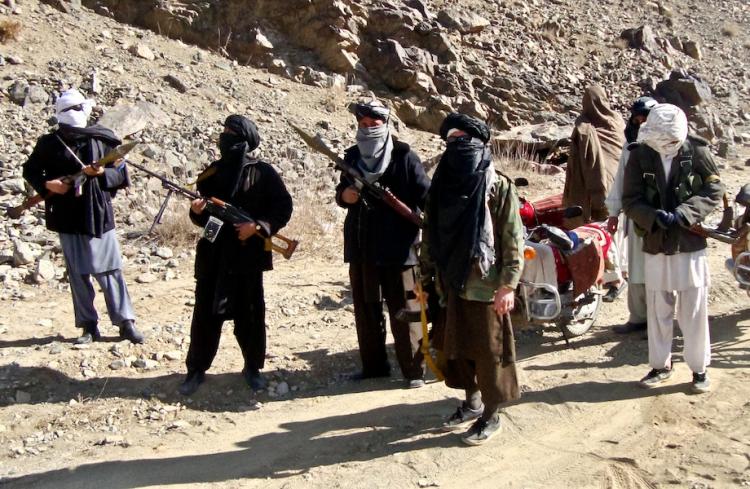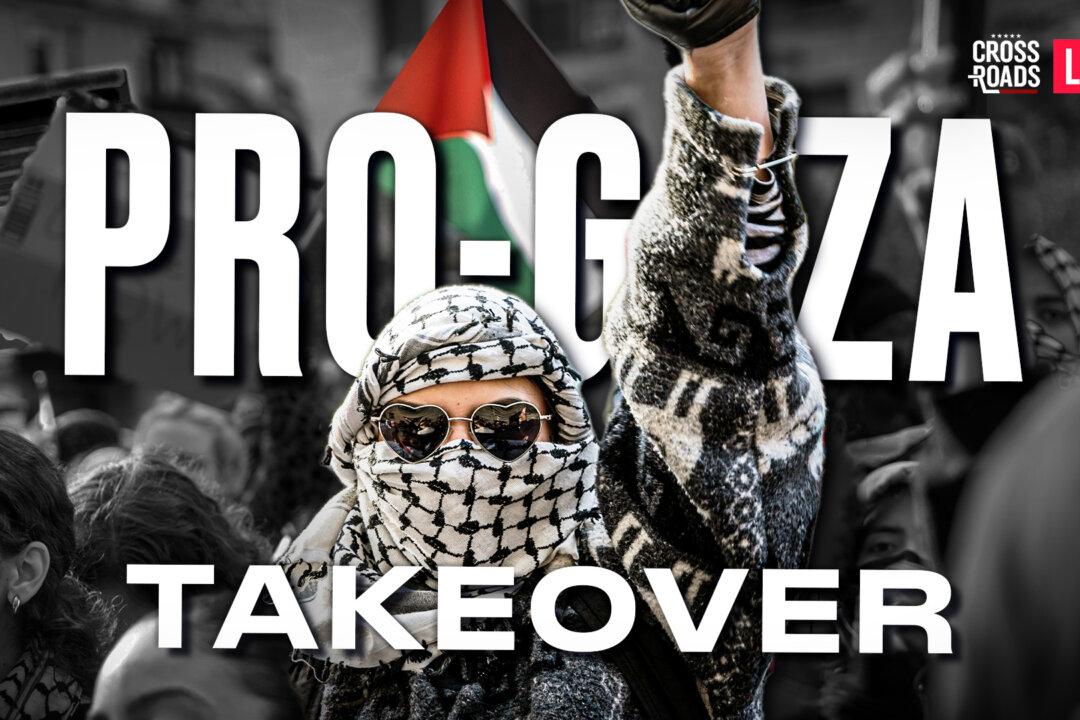Jere Van Dyk still gets threatening phone calls from the Taliban, although it’s been about three weeks now since the last one, he says. It’s been this way since he was released from a Taliban prison in the Afghan tribal regions.
Van Dyk spent 45 days as a prisoner, knowing they could kill him at any minute, after he was captured in February 2008. He just released a book detailing his experiences, “Captive: My Time as a Prisoner of the Taliban.”
The trip to Afghanistan was Van Dyk’s fourth time meeting with the Taliban. He lived with the mujahideen in the 1980s, while Afghanistan fought against the Soviets—an experience that he wrote about in his previous book, “In Afghanistan: An American Odyssey.” Some of his former contacts became high-ranking officers in the Taliban, which gave him a foot-in that no other Western journalist has.
He wanted to do “what other journalists couldn’t do,” Van Dyk said over the phone, from his New York apartment.
Hearing media reports, the White House, and even intelligence agencies describe the Afghan tribal areas as lawless, was nearly painful for Van Dyk who knows their codes well. “I didn’t believe for a second that the tribal areas were a lawless area,” he said.
Through his experiences with the Taliban, Van Dyk knows the Pashtun law, which acts as the governing principles—a code of ethics and honor that guide the area. He wanted to write a book that would “explain the Taliban, who they are, who’s behind them, what their goals are—in the same way when I did when I was younger with the mujahideen,” he said.
While trekking through the tribal region in search of a former contact, disguised as an Afghani, Van Dyk and his translator were ambushed by a Taliban fighter with a rocket launcher and were soon surrounded. They were taken into the mountains. “I got what I was looking for, but not in the way that I intended,” he said.
Pashtun Culture
According to Van Dyk, one of the largest issues the United States faces in Afghanistan is that they don’t understand the thinking of the Taliban or of the Pashtuns.
It maintains a primal state, which is difficult to grasp in today’s world. The country has been left largely untouched throughout history. When England was in India, Afghanistan was left as a buffer between them and Russia. The former king of Afghanistan also made an effort to keep foreigners out. It is unknown how long the Pashtuns have been there—estimates range from 3,000 years to 5,000 years.
While in the West, thinking is shaped by technology, formal education, books, television, and other mediums; Afghanistan has a different foundation. Van Dyk recalls the look in the eyes of the Taliban. “There’s something extremely wily, extremely cunning, almost primal and reptilian in their way of looking at me—[an] understanding in a way that runs circles around Westerners.”
“It is so complex, and the culture is so hard to penetrate,” he said.
Under the close watch of his captors, Van Dyk said he had to maintain a balance between humbleness and strength, as if he showed too much weakness, he would lose their respect, and he would offend them if he was not humble. “Because I was a prisoner, and they could snap their fingers and kill me, and I knew that,” he said.
Being held under the Taliban, Van Dyk was given two choices: convert to Islam or die. He went through the motions of the prayers. “They would watch me very, very carefully—how I would pray, or attempt to pray, and all the things I would do—and I knew they would discern exactly, the difference between being false and being true. [It] was evident in a way that they could see immediately.”
When removed from technology and civilization, being in the mountains, “then it’s just man against man, man with man, everything removed, and in that regard, they are at least our equal,” he said.
The culture in Afghanistan is one of tribal lineage. The most important question someone can ask, according to Van Dyk, is “who is your grandfather?”
They have a code based on honor, which has become an alien concept in today’s world, says Van Dyk. He said this is one of the main reasons why the West has such a difficult time with Afghan President Hamid Karzai—U.S. leaders have humiliated him. “He won’t talk to any of them,” Van Dyk said. “The only person was McCrystal, apparently, who he even got along with.”
“Honor counts for everything,” said Van Dyk. “A man’s pride. This is ancient. We don’t think like this anymore. In the end, everything comes down to a man’s word and his pride.”
He suspects honor is one of the reasons why the Taliban didn’t kill him, although he is still uncertain. When he was released, the Taliban commander told him, “congratulations on escaping death.” Van Dyk adds, “I knew he wanted to kill me. Somebody above him made the decision not to.”
Van Dyk said that although the Taliban still hold the exact same weapons the mujahideen used to fight the Soviets, they are different from the men he once knew.
When he was with them in the 1980s, there were many older men in their 40s and 50s. Today, they’re all young, some in their early 20s, or even in their teens, Van Dyk said. There was also something more dark about them, he said. “I feel that these people were more lethal.”
Van Dyk spent 45 days as a prisoner, knowing they could kill him at any minute, after he was captured in February 2008. He just released a book detailing his experiences, “Captive: My Time as a Prisoner of the Taliban.”
The trip to Afghanistan was Van Dyk’s fourth time meeting with the Taliban. He lived with the mujahideen in the 1980s, while Afghanistan fought against the Soviets—an experience that he wrote about in his previous book, “In Afghanistan: An American Odyssey.” Some of his former contacts became high-ranking officers in the Taliban, which gave him a foot-in that no other Western journalist has.
He wanted to do “what other journalists couldn’t do,” Van Dyk said over the phone, from his New York apartment.
Hearing media reports, the White House, and even intelligence agencies describe the Afghan tribal areas as lawless, was nearly painful for Van Dyk who knows their codes well. “I didn’t believe for a second that the tribal areas were a lawless area,” he said.
Through his experiences with the Taliban, Van Dyk knows the Pashtun law, which acts as the governing principles—a code of ethics and honor that guide the area. He wanted to write a book that would “explain the Taliban, who they are, who’s behind them, what their goals are—in the same way when I did when I was younger with the mujahideen,” he said.
While trekking through the tribal region in search of a former contact, disguised as an Afghani, Van Dyk and his translator were ambushed by a Taliban fighter with a rocket launcher and were soon surrounded. They were taken into the mountains. “I got what I was looking for, but not in the way that I intended,” he said.
Pashtun Culture
According to Van Dyk, one of the largest issues the United States faces in Afghanistan is that they don’t understand the thinking of the Taliban or of the Pashtuns.
It maintains a primal state, which is difficult to grasp in today’s world. The country has been left largely untouched throughout history. When England was in India, Afghanistan was left as a buffer between them and Russia. The former king of Afghanistan also made an effort to keep foreigners out. It is unknown how long the Pashtuns have been there—estimates range from 3,000 years to 5,000 years.
While in the West, thinking is shaped by technology, formal education, books, television, and other mediums; Afghanistan has a different foundation. Van Dyk recalls the look in the eyes of the Taliban. “There’s something extremely wily, extremely cunning, almost primal and reptilian in their way of looking at me—[an] understanding in a way that runs circles around Westerners.”
“It is so complex, and the culture is so hard to penetrate,” he said.
Under the close watch of his captors, Van Dyk said he had to maintain a balance between humbleness and strength, as if he showed too much weakness, he would lose their respect, and he would offend them if he was not humble. “Because I was a prisoner, and they could snap their fingers and kill me, and I knew that,” he said.
Being held under the Taliban, Van Dyk was given two choices: convert to Islam or die. He went through the motions of the prayers. “They would watch me very, very carefully—how I would pray, or attempt to pray, and all the things I would do—and I knew they would discern exactly, the difference between being false and being true. [It] was evident in a way that they could see immediately.”
When removed from technology and civilization, being in the mountains, “then it’s just man against man, man with man, everything removed, and in that regard, they are at least our equal,” he said.
The culture in Afghanistan is one of tribal lineage. The most important question someone can ask, according to Van Dyk, is “who is your grandfather?”
They have a code based on honor, which has become an alien concept in today’s world, says Van Dyk. He said this is one of the main reasons why the West has such a difficult time with Afghan President Hamid Karzai—U.S. leaders have humiliated him. “He won’t talk to any of them,” Van Dyk said. “The only person was McCrystal, apparently, who he even got along with.”
“Honor counts for everything,” said Van Dyk. “A man’s pride. This is ancient. We don’t think like this anymore. In the end, everything comes down to a man’s word and his pride.”
He suspects honor is one of the reasons why the Taliban didn’t kill him, although he is still uncertain. When he was released, the Taliban commander told him, “congratulations on escaping death.” Van Dyk adds, “I knew he wanted to kill me. Somebody above him made the decision not to.”
Van Dyk said that although the Taliban still hold the exact same weapons the mujahideen used to fight the Soviets, they are different from the men he once knew.
When he was with them in the 1980s, there were many older men in their 40s and 50s. Today, they’re all young, some in their early 20s, or even in their teens, Van Dyk said. There was also something more dark about them, he said. “I feel that these people were more lethal.”







